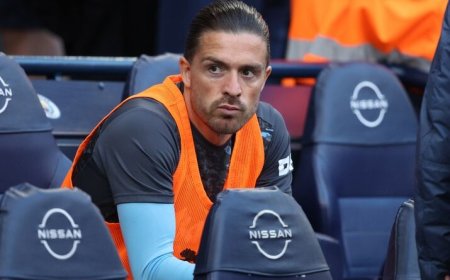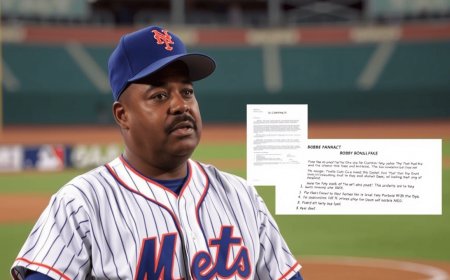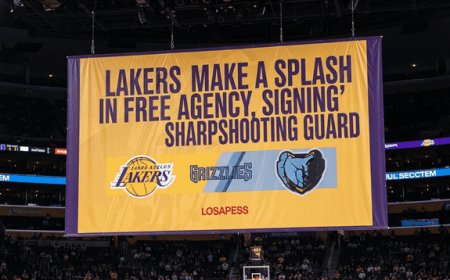Manchester United's NEW Attack: How Sesko, Cunha & Mbeumo Will Transform the Club
Manchester United's new frontline trio – Sesko, Cunha, and Mbeumo – promises a revolutionary attack. Discover how their unique strengths will transform the team's goal-scoring and tactical versatility.

Breaking News for Red Devils Fans! Manchester United is poised to unveil a revolutionary new front line featuring Benjamin Sesko, Matheus Cunha, and Bryan Mbeumo. This strategic overhaul aims to decisively address the club's long-standing goal-scoring woes and usher in a dynamic era of attacking prowess. This transformative trio is expected to unlock devastating new dimensions for United, offering unprecedented versatility and a genuine threat against any defense.
For years, Manchester United has grappled with a significant problem: a lack of consistent goal-scoring. The team's previous front lines often offered little in terms of pace to stretch defenses, aerial presence for direct play, or physical threat to occupy defenders. This "gaping hole" has been a persistent issue across multiple managerial systems, including Erik ten Hag's. While other elite clubs found ways to dissect opposition defenses, United's attackers frequently struggled to make a decisive impact. Even recent signings like Rasmus Hojlund, despite scoring 16 goals in his first season, faced challenges, and other strikers besides Zlatan Ibrahimovic haven't consistently provided enough goals.
Why is Benjamin Sesko a Game-Changer for United's Attack?
The arrival of Benjamin Sesko is anticipated to significantly alter United's attacking landscape. At Leipzig, Sesko boasted an impressive non-penalty goal rate, scoring every 218 minutes – more than double the frequency of Hojlund (533 minutes) and Xerxi (464 minutes) at United. Beyond statistics, Sesko brings a crucial blend of attributes: his speed makes him a devastating vertical threat, perfectly suited for quick transitions within the Amorim system. He excels at running into space behind defenses, an area where United previously lacked. Sesko himself describes his preferred role as a "proper box presence," someone who is "ready to attack" and always available for crosses, a mindset that promises to deliver goals. Indeed, 10 of his 39 goals since joining Leipzig have been headers, showcasing his ability to finish from wide deliveries.
How Will Sesko Bolster Manchester United's Defensive Shape?
Intriguingly, Sesko's impact extends beyond goal-scoring to the defensive phase, particularly in United's build-up from the back. United has notoriously struggled to progress the ball from their own half for years. Sesko provides a vital alternative: a target man capable of holding the ball up or winning long balls. His aerial statistics are outstanding, with 2.6 aerial duels won per 90 minutes and a near 60% success rate. This contrasts sharply with Xerxi (29.9%) and Hojlund (24.6%). Sesko's ability to win 49 flick-ons last season (compared to Xerxi's 21 and Hojlund's 17 combined) means United can now effectively go direct when needed. This aerial threat will force opposition teams to rethink their high press, granting United players greater time and space to play out from the back with confidence.
What Makes This Front Three So Complementary?
The true excitement lies in how Sesko, Cunha, and Mbeumo’s individual strengths will seamlessly complement each other. Sesko’s prowess in winning flick-ons will be crucial for unleashing Matheus Cunha’s ability to secure second balls and Bryan Mbeumo’s pace in behind defensive lines. Both Cunha and Mbeumo are significant goal contributors themselves, collectively netting 35 goals, which means Sesko won't carry the entire goal-scoring burden as Hojlund often had to. This shared responsibility is a key reason why Sesko is expected to thrive. The combination of Sesko's physicality, Cunha's exceptional ball-carrying abilities, and Mbeumo's intelligence in the final third provides United with multiple formidable ways to break down any defense.
How Will United Overcome Low Blocks and Vary Their Approach?
For years, Manchester United has found it challenging to penetrate low-block defenses, often resorting to predictable, patient build-up around the box that yields limited results. With this new trident, United gains unprecedented tactical flexibility. They can continue patient build-up through their number 10s or, crucially, go direct to Sesko, who can bring others into play. His 28% flick-on success rate is expected to create numerous opportunities for runners from deep. Furthermore, Mbeumo, who attempted more crosses than any other Premier League player last season (202), will have a prime target in Sesko, who is adept at finishing aerial deliveries at the back post. This genuine overhaul on the left (Cunha, an inside number 10 and ball-carrier), the right (Mbeumo, cutting inside and scoring), and through the middle (Sesko, a massive aerial threat with pace and presence) provides United with massive versatility and a huge goal threat that was absent last season.
- FAQ Section
- Q1: What are the main issues Manchester United's new attack aims to solve? A: The new attack aims to solve Manchester United's long-standing problems with goal-scoring, lack of pace to stretch defenses, absence of aerial presence, and difficulty in progressing the ball from the back.
- Q2: How does Benjamin Sesko's playing style benefit Manchester United? A: Benjamin Sesko offers a devastating vertical threat with his pace, making runs in behind. He is also an elite aerial target man, excelling at winning flick-ons and holding up play, which helps the team play out from the back and create direct goal opportunities.
- Q3: In what ways do Cunha, Mbeumo, and Sesko complement each other? A: Sesko's flick-ons will unlock Cunha's ability to win second balls and Mbeumo's pace. The trio shares goal-scoring responsibilities, and their combined physicality (Sesko), ball-carrying (Cunha), and intelligence (Mbeumo) provide diverse attacking options.
- Q4: Will Sesko succeed where previous United strikers have struggled? A: The expectation is yes, primarily because Sesko won't have to carry the entire goal-scoring burden alone. Cunha and Mbeumo will contribute significant goals, and Sesko's specific attributes, including his aerial threat and ability to run in behind, are tailored to fill key gaps in United's attack and Amorim's system.






























